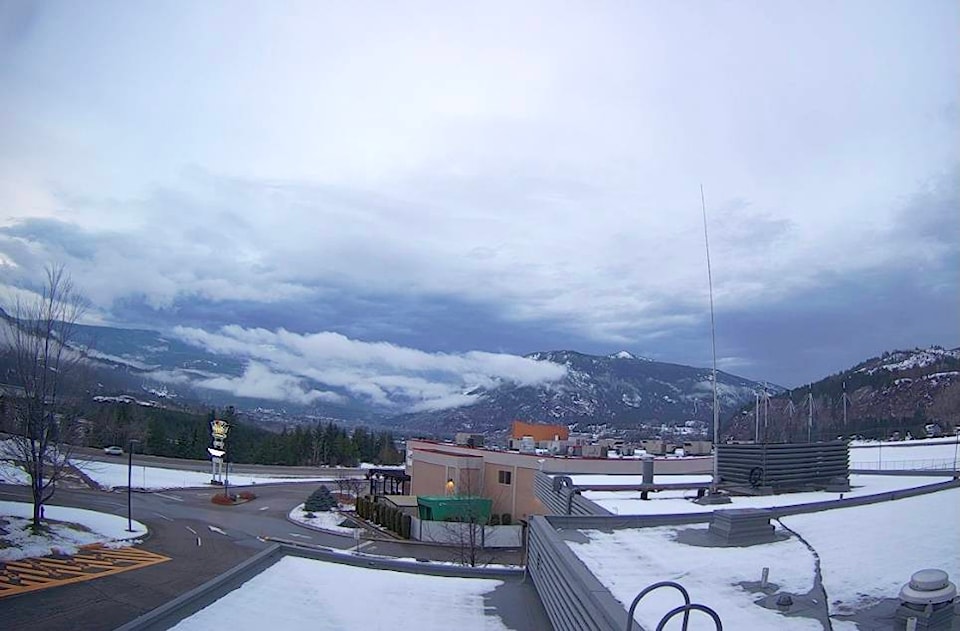We are writing this letter as concerned users of the Castlegar airport.
My wife and I are both commercial pilots for Canada’s national airlines, have each flown for about 30 years and fly into and out of the Castlegar airport up to four times a month as passengers.
I also conduct ab-initio flight training on my daughters from the airport, and we hangar our Cessna 172 at Brilliant Aviation.
We understand that Nav Canada is considering closing the FSS tower facility at the West Kootenay Regional Airport in Castlegar. We have written a letter to Nav Canada in objection to this plan in hopes that they will reconsider.
The West Kootenay Regional Airport at Castlegar is a challenging airport to fly into and out of for a wide variety of reasons.
The airport is located in a tight valley, and is surrounded by mountainous terrain. On the field, there are wind socks at four different points along the length of the runway (three alongside the runway, and one private windsock near the forestry tanker base).
It is not uncommon for all four to show winds out of significantly differing directions due to the way the wind flows over the mountains and through the valleys. There are frequent significant up and down drafts in the area surrounding the airport and near the ground.
There is a river nearby that is responsible for generating low fog during early morning from late fall to early summer.
The instrument approach (essentially a cloud break procedure) does not allow for direct line of sight as it pertains to traffic in the circuit. The circuit, always to the west side of the airport due to terrain, cannot be flown in a square pattern because of the mountains on approach to either runway, furthermore complicating visual identification of traffic.
Radio communications can be difficult, even as close as 10 miles from the airport due to line of sight limitations as a result of interference from physical terrain. Despite all these challenges, and perhaps as a result, traffic into the Castlegar airport relies heavily on the services of the highly skilled Flight Service Specialists at the Flight Service Station to help guide pilots safely in and out. Indeed, this has been safely done for decades.
On an IFR approach pilots are focused on using their instruments as they descend through thick cloud down into the valley.
FSS help to paint a picture of what the weather is like at the mouth of the valley where the instrument approach ends. This is the point in which a pilot will have to continue on a visual approach down to the runway. Removing FSS from this process is like removing a “set of eyes” and will diminish the ability of an inbound IFR aircraft executing an approach during inclement weather to successfully land.
Which is likely to result in the flight safely returning to Vancouver or Calgary — a less desirable outcome for those of us wanting to come home or visit the Kootenays.
The services offered to pilots by FSS are not limited to observing weather in and around the airport, as well as in the valleys.
In Castlegar in particular, due to the terrain, the primary role is to offer traffic advisories to aircraft on the ground and in flight. FSS also track aircraft in the area and pass on this information to pilots so that necessary adjustments to flight paths and timing for landings and take offs can be made.
This helps to ensure the safe movement of aircraft into and out of this airport especially during peak summer fire operations. The Castlegar Airport serves as an air tanker base for the BC Forestry.
In addition to air tankers, the airport is also home to dozens of helicopter operators during fire season, in addition to the year-round helicopter operators located on the field.
Pilots flying into and out of Trail and Nelson frequently rely on weather observations and safety information from FSS at Castlegar including Pacific Coastal and Air Ambulance.
If conditions are less favorable than at Castlegar then they will land at Castlegar. FSS serves the aviation community with safety and efficiency in mind.
They are always ready to respond to any emergency as well.
According to the 2016 Census, the areas comprised of the Regional District of Kootenay Boundary and the Regional District of Central Kootenay have a combined population of 90,604 inhabitants.
The West Kootenay Regional Airport and, to a smaller degree (passenger seats available) the Trail Airport are the only airports in the region with scheduled passenger air service. When the effects of COVID-19 have curtailed, there will remain strong demand for such service.
In conclusion, while we completely understand that due to the nature the particularly brutal impact COVID-19 has had on Nav Canada, and cost cutting is imperative, we hope that for the reasons stated above Castlegar FSS may be granted a reprieve and or reconsideration.
Antonius and Theresa Niers.
